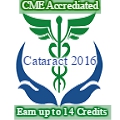
Sambasiva Rao Velagapudi
Aravinda Lasik Eye Hospital, India
Title: A retrospective case series review and comparative analysis of the outcomes of three refractive surgeries (PRK, Lasik and e- Lasik ) for low to moderate grade simple myopia in terms of efficacy, safety and economics over last 2 decades at a secondary centre in semi urban southern India
Biography
Biography: Sambasiva Rao Velagapudi
Abstract
Purpose: To retrospectively analyze the outcomes of all three refractive surgeries (PRK, LASIK, E-LASIK) for low to moderate myopia and compare visa via the results in terms of cost effectiveness, safety and efficacy. Materials & Methods: 12000 patients (n=24000 eyes) had been enrolled after they had met the standards for inclusion criteria and then randomized to three groups, the first group (n=16000) underwent E-LASEK, the second group (n=4000) underwent PRK and the third group (n=4000 eyes) underwent LASIK. PRK and LASIK were done in a conventional manner and E-LASEK was performed with a modified technique of using 20% absolute ethyl alcohol instead of standard sub-epithelial microkeratome to decrease the microkeratome related cost constraints to the patient and surgeon Results: The E-LASEK group (n=16000) and the LASIK group (n=4000) fared well with near emmetropia in spherical dioptric powers up to -8D alone or with astigmatism, while the PRK group did well in up-to dioptric powers of -6D .The significant outcome being the superior results of E-LASEK in thin corneas, recurrent erosions. Conclusion: The modified E-LASEK is efficacious, safe and cost effective alternative when compared PRK and LASIK in predisposed corneas and viable when economic burden is a major constraint in this part of the world.

